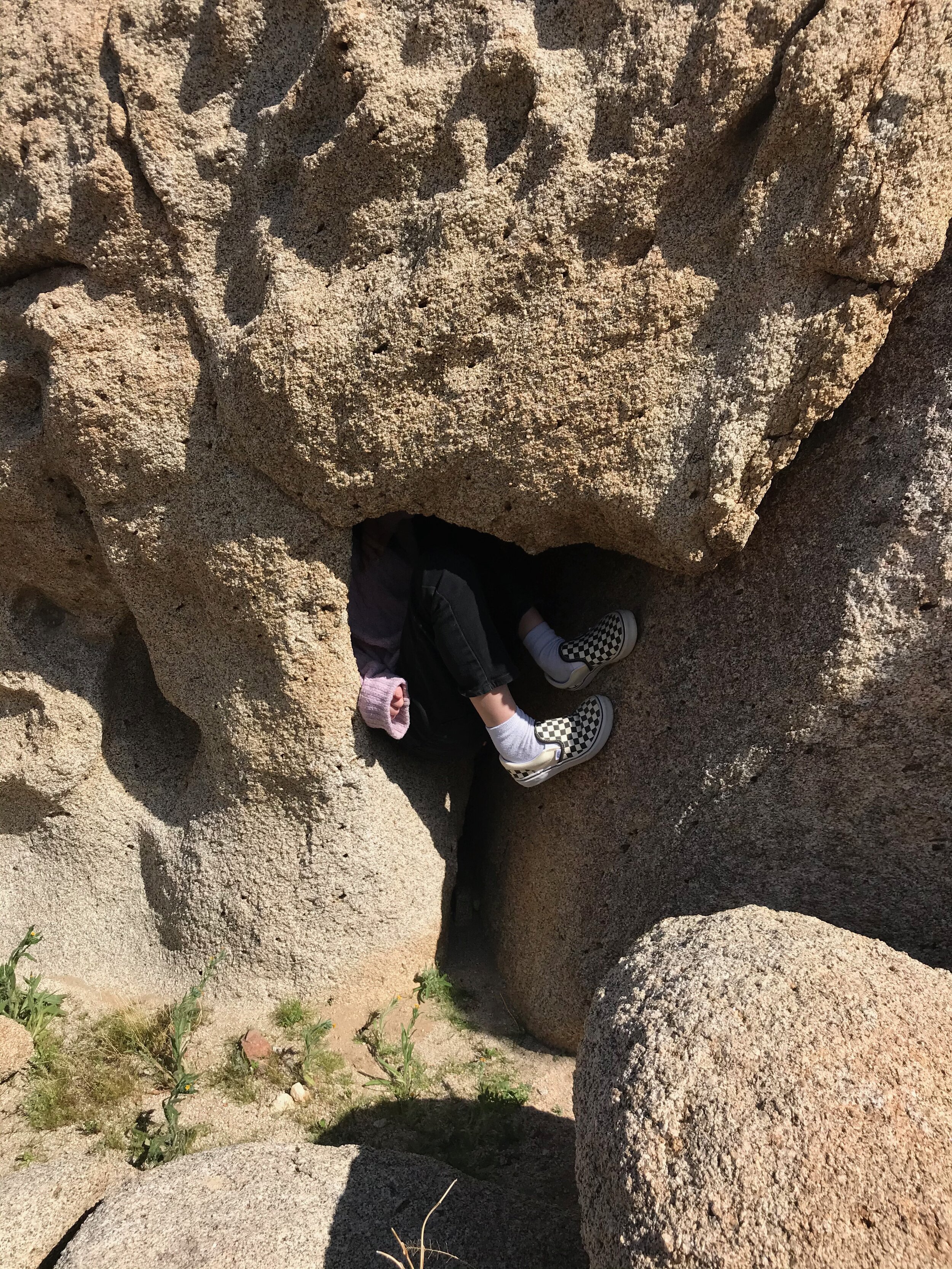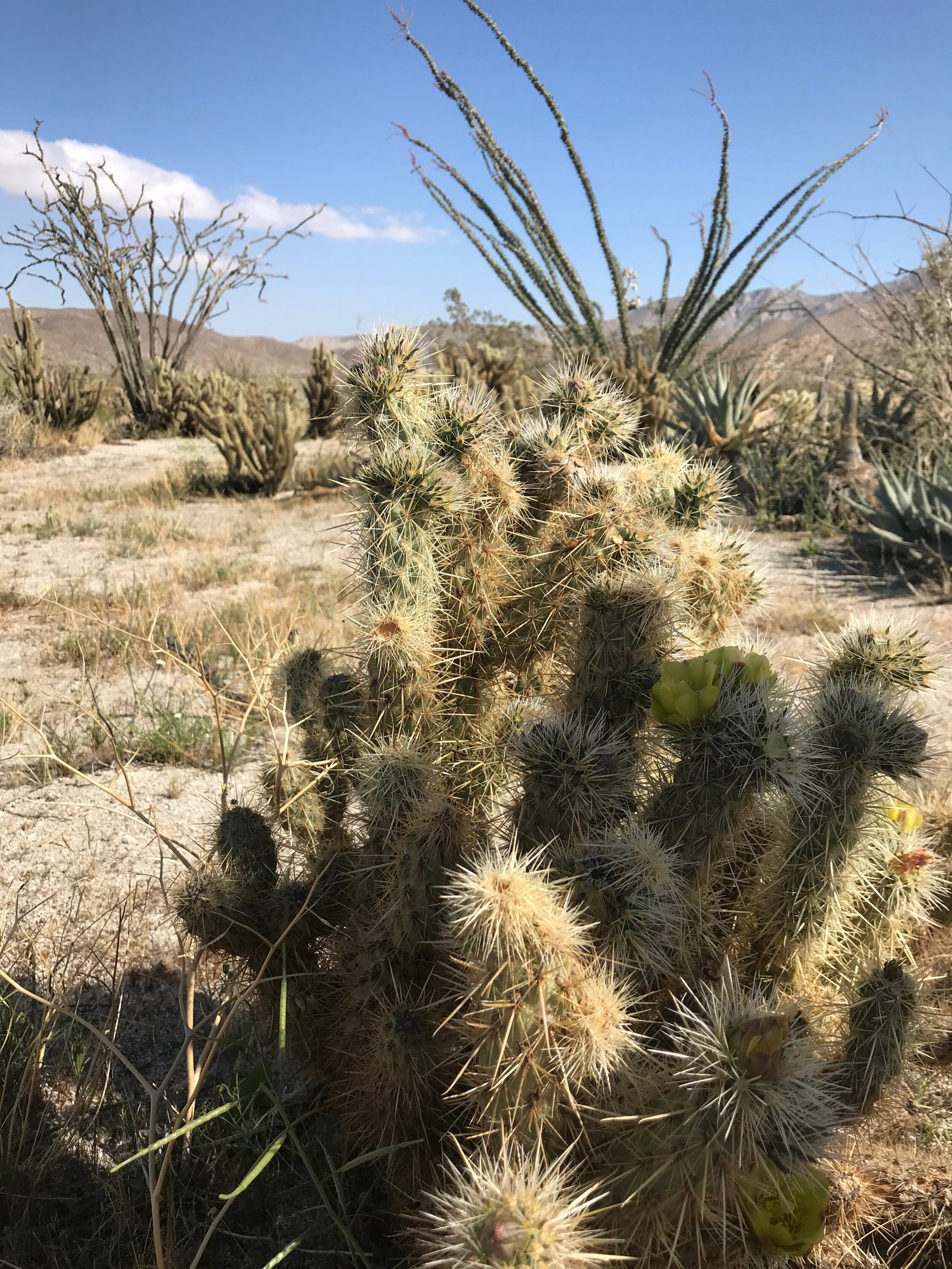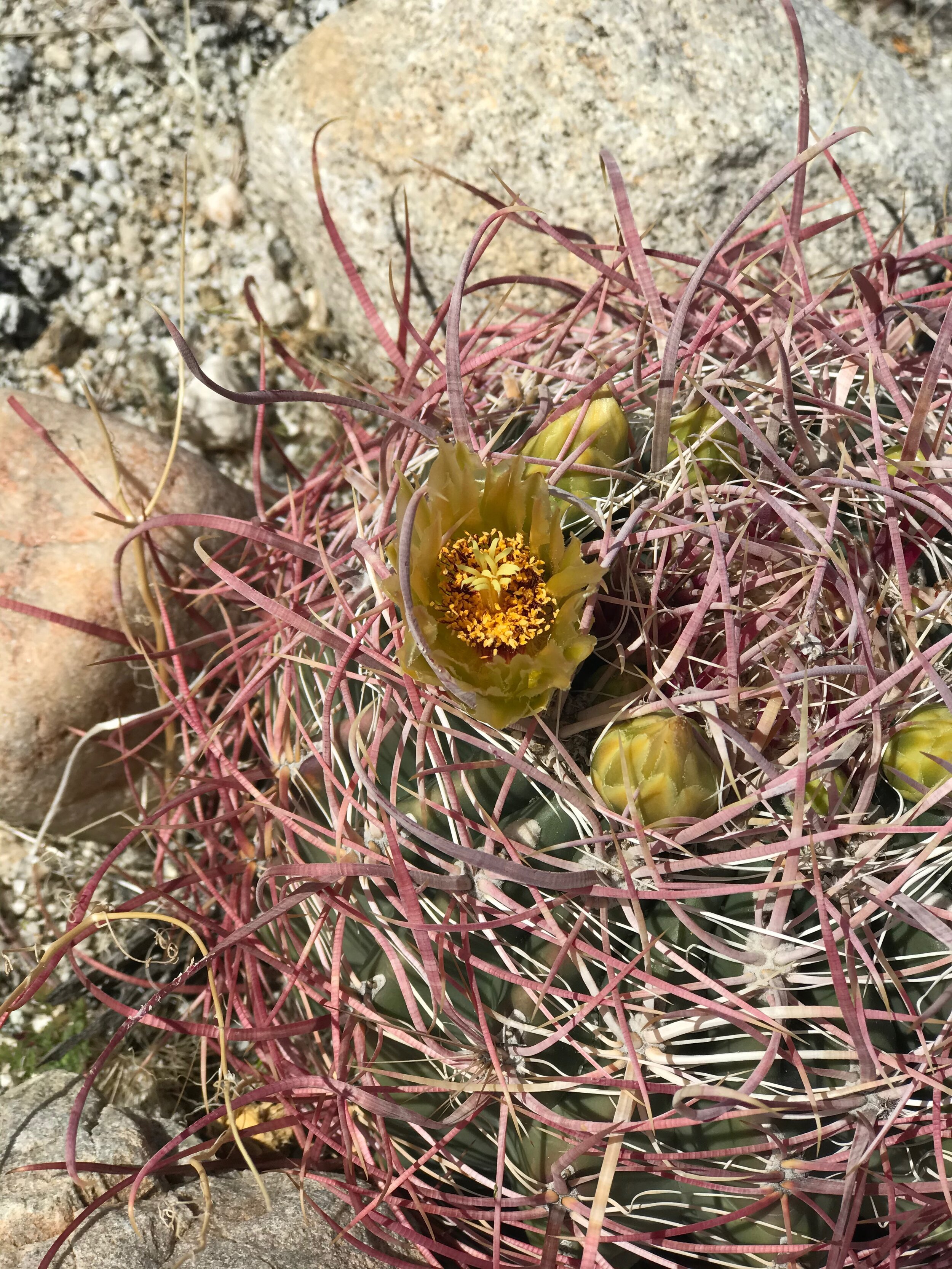Have Desert First



[First Published July 7, 2020]
When our country awoke to our plague year, my family was already isolated, visiting the desert in southern California. All year I long for our annual pilgrimage to this landscape I once found so foreign, and now find so comforting in its extremes, and in its incredible variety of lives. We cut our trip short as the state shut down— getting home quickly felt correct. But we still long to be in the desert— social isolation comes natural to us, and rural Virginia often feels crowded, even in the time of Covid.
Desert longing is a trope— the improbability of desert life, the extremities, the vast silence.
Our plague requires isolation— we should make our own deserts— but plague emphasizes our biological and community connections: We need to be apart for our own success, but the plague makes clear how connected we are. When Daniel Defoe wrote A Journal of the Plague Year in 1722, Europe had just ended yet another terrible few years of Bubonic Plague. Though he set his book in 1665, it could be an account of any plague— it could be an account of our own. He grapples with the same issue we’re discussing today— the limits of public authority, the government’s responsibility for finance and for healthcare, and how we balance self-interest with public good.
The Journal’s vividness and modernity helped me fall in love with the Early Modern Period in my twenties, and I devoted my next decade to studying it, and especially to studying its landscape, both London and the pastoral fantasies being created outside the great metropolis. Defoe’s narrator, H. F., is a journalist, a stunningly new occupation at the time. I have always admired the way he observes, records, and comments on the history passing through him, and how he turns his historical sources into a document that feels so alive.
John Dunstall’s Broadsheet documenting the 1665 Plague in London
Bubonic Plague, even today, kills between sixty to eighty percent of those infected. Covid-19 is a lamb compared to this panther. Defoe’s narrator H.F. seems a dashing hero, visiting the pits where bodies are flung, listening to every street preacher, tabulating the Bills of Death. But, Defore constructed this world 40 years later from documents— he was only 5 when the 1665 plague raged through. But I, like all 18th Century historians, hesitate to call the book a “novel” lest you think its not factual, because it is dreadfully factual. But I love this book because also it is art, and after my twenties ended, I knew I needed to devote my time not to explaining Defoe’s world, but to making art of my own.
My plague year began on the farm last July, with a story it’s taken months for me to start to tell. I hope I can recapture some of the viscera of the experience. It’s possible I mean that literally.
When we first moved to the farm, we stopped watching dramas on television. We needed comedies. We had drama enough outside our door. And sometimes inside our doors, nursing injured chickens by the wood stove, sewing vests for labs I woke to feed throughout the night, nursing baby chicks when their legs went wonky. There were predators to trap, and lambs who didn’t make it. There were chicken coops ravaged by weasels, who kill for sport.
Defoe writes, “This was a mournful Scene indeed… they were all dead, and were to be huddled together into the common Grave of Mankind, as we may call it, for here was no Difference made.”
